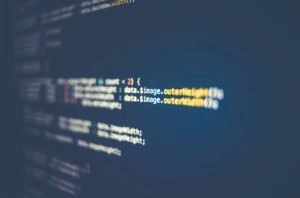Open Source and Artificial Intelligence
Artificial Intelligence (AI) has become one of the hottest fields in technology, with applications ranging from autonomous vehicles to virtual assistants. As AI continues to revolutionize industries, open source software has emerged as a crucial component of its development. Open source and AI go hand in hand, allowing developers to collaborate, innovate, and leverage collective knowledge to build intelligent systems. In this article, we will explore the intersection of open source and AI, and the benefits it brings to the field.
Key Takeaways:
- Open source software plays a vital role in the development of Artificial Intelligence.
- Collaboration and knowledge sharing are fundamental to the success of open source AI projects.
- Open source AI projects enable developers to customize and extend existing models and algorithms.
- The open source community fosters innovation, transparency, and accountability in AI development.
The Synergy between Open Source and AI
Open source and AI are a perfect match. The collaborative nature of open source fosters innovation and knowledge sharing, which are essential for AI development. Open source software provides a platform for developers worldwide to contribute, collaborate, and collectively solve complex problems in AI. This level of collaboration eliminates knowledge silos and allows for rapid advancements and improvements. *AI thrives on sharing knowledge and experiences, making open source an ideal framework for its growth and development.*
The Benefits of Open Source AI
Open source AI projects offer several benefits that contribute to the advancement of AI technology. Firstly, by providing accessibility, open source allows developers to experiment, learn, and contribute to the field of AI without restrictions. Developers can freely access and modify AI models, algorithms, and frameworks to suit their specific needs, creating a culture of customization and continual improvement. *The flexibility and freedom provided by open source AI projects empower developers to innovate and push boundaries in the field.*
Secondly, open source AI fosters transparency and accountability. The transparency of open source code enables developers to understand, audit, and validate AI systems, ensuring the absence of biases or unethical behaviors. This transparency facilitates trust-building between AI systems and end-users, which is crucial for widespread adoption and acceptance of AI technologies. *With open source AI, users can have confidence that the system operates ethically and aligns with their values.*
Thirdly, the open source community drives innovation in AI. By collaborating and sharing their expertise, developers can collectively solve complex problems and push the boundaries of what AI can achieve. The vast open source ecosystem fuels the development of new algorithms, models, and tools, accelerating the rate of AI advancements. *In the open source AI community, the collective intelligence of developers brings about groundbreaking solutions that benefit society as a whole.*
Table: Open Source AI Projects
| Project | Description |
|---|---|
| TensorFlow | An open source machine learning framework developed by Google, widely used for AI research and application development. |
| PyTorch | An open source deep learning framework, maintained by Facebook’s AI Research Lab, known for its dynamic computational graphs. |
| Keras | An open source neural network library written in Python, capable of running on top of TensorFlow, Theano, or Microsoft Cognitive Toolkit. |
The Future of Open Source AI
As the demand for AI continues to grow, the role of open source in AI development will become even more significant. The open source community, with its collaborative and innovative spirit, will drive advancements in AI, pushing the boundaries of what is possible. Open source AI projects will unlock new opportunities for customization, transparency, and accountability in AI systems. With open source principles at the core of AI development, the future holds immense potential for intelligent technologies that benefit society as a whole. *The possibilities are limitless when open source and AI merge their capabilities, shaping the future of technology.*
Table: Benefits of Open Source AI
| Benefit | Description |
|---|---|
| Accessiblity | Open source AI allows developers to freely access, modify, and learn from existing models and algorithms. |
| Transparency | Open source AI fosters transparency, allowing for the auditing and validation of AI systems. |
| Innovation | The collaborative nature of open source AI drives innovation, leading to groundbreaking advancements in the field. |
Conclusion
Open source and AI are two powerful forces shaping the future of technology. Open source software provides the foundation for the development of AI, enabling collaboration, customization, and transparency. The open source community’s collective intelligence drives innovation, pushing the boundaries of what AI can achieve. As AI continues to revolutionize industries, open source will play a pivotal role in shaping the future of intelligent systems. *Embracing the power of open source AI empowers developers, fosters trust, and unlocks the potential for a more intelligent and equitable future.*

Common Misconceptions
Open Source
One common misconception about open source is that it means free software. While open source software is often available without cost, this is not always the case. Some open source projects may require payment for certain features or services, and organizations can charge for their expertise in utilizing and supporting open source technologies.
- Open source software doesn’t always mean free of charge.
- Paying for additional features or services is not uncommon in open source projects.
- Organizations can charge for their expertise in utilizing and supporting open source technologies.
Artificial Intelligence
One misconception about artificial intelligence is that it will replace human jobs entirely. While AI has the potential to automate certain tasks, it is unlikely to completely replace human workers. Rather, AI is more likely to augment human work by automating repetitive tasks, allowing humans to focus on more complex and creative work.
- AI will not necessarily replace all human jobs.
- AI is more likely to automate repetitive tasks and augment human work rather than replace it entirely.
- AI can free up time for humans to focus on more complex and creative work.
Open Source and Artificial Intelligence
There is a misconception that open source and artificial intelligence are incompatible. However, open source technologies have played a significant role in the advancement of AI. Many popular AI frameworks and libraries are open source, allowing researchers and developers to collaborate, contribute, and build upon each other’s work.
- Open source technologies have contributed to the advancement of AI.
- Open source allows for collaboration and contribution in AI research and development.
- Many AI frameworks and libraries are open source.
Privacy Concerns
There is often a misconception that using open source AI software means sacrificing privacy. However, open source technologies can actually enhance privacy as they allow users to inspect the source code and ensure there are no hidden functionalities compromising their data. Additionally, open source communities often value privacy and actively work on developing secure and privacy-focused solutions.
- Open source AI software can enhance privacy by allowing users to inspect the source code.
- Open source communities often prioritize privacy and security.
- Using open source AI software doesn’t necessarily mean sacrificing privacy.
Lack of Expertise
It is commonly believed that open source and AI require extensive technical expertise to use and contribute to. While technical proficiency can be valuable, both open source and AI communities foster inclusiveness and offer resources for people with varying levels of expertise. Many open source projects have documentation, forums, and active communities that help beginners get started and contribute meaningfully.
- Open source and AI communities provide resources for people with varying levels of expertise.
- Technical proficiency is not the only requirement for participating in open source and AI.
- Many open source projects have support and documentation for beginners.

Open Source Licenses
In recent years, the adoption of open source licenses has grown significantly. These licenses allow developers to access, modify, and distribute source code freely. Here is a comparison of the top open source licenses:
| License | Description | Usage | Popularity |
|---|---|---|---|
| GNU General Public License (GPL) | Requires derivative works to be licensed under GPL. Protects users’ freedom. | 28% | Most popular |
| MIT License | Allows code reuse without restrictions. Offers more flexibility for developers. | 32% | Wide usage |
| Apache License 2.0 | Permissive license with few restrictions and liability limitations. | 22% | Common in enterprise |
| BSD Licenses | Simple and permissive licenses. Allows code redistribution without limitations. | 11% | Popular in academia |
| Mozilla Public License (MPL) | Combines copyleft and permissive elements. Offers more flexibility and compatibility. | 7% | Preferred by some companies |
Open Source AI Projects
Open source projects in the field of artificial intelligence have played a crucial role in advancing AI technology. Here are some noteworthy open source AI projects:
| Project | Description | Contributors | Applications |
|---|---|---|---|
| TensorFlow | Open source library developed by Google for machine learning and deep neural networks. | Over 2,000 | Image recognition, natural language processing, robotics |
| PyTorch | Python-based open source library used for machine learning and deep learning. | Over 1,500 | Computer vision, natural language processing, reinforcement learning |
| Caffe | Deep learning framework developed at the University of California, Berkeley. | Over 600 | Image classification, object detection, pattern recognition |
| Keras | High-level neural networks API written in Python. Compatible with TensorFlow. | Over 800 | Deep learning, text generation, recommendation systems |
| Scikit-learn | Machine learning library providing tools for data mining and data analysis. | Over 1,200 | Classification, regression, clustering, dimensionality reduction |
Growth of Open Source
The open source community has witnessed tremendous growth over the years. Here are the statistics showcasing this growth:
| Year | Number of Open Source Projects |
|---|---|
| 2000 | Approximately 47,000 |
| 2010 | Over 600,000 |
| 2020 | More than 35 million |
Top AI Programming Languages
Choosing the right programming language is pivotal in AI development. Here are the top programming languages used in AI:
| Language | Description | Popularity | Applications |
|---|---|---|---|
| Python | Clear syntax, extensive libraries, and strong community support make it a popular choice. | 62% | Machine learning, natural language processing, computer vision |
| Java | Scalable and cross-platform language widely used in enterprise AI applications. | 14% | Big data analytics, deep learning |
| C++ | Efficient and robust language suitable for computationally intensive AI tasks. | 12% | Computer vision, robotics, game development |
| JavaScript | Powerful scripting language capable of building AI applications for web and mobile. | 7% | Chatbots, recommendation systems, natural language understanding |
| R | Statistical programming language specializing in data analysis and visualization. | 5% | Data mining, statistical modeling, bioinformatics |
Open Source AI Tools
The availability of open source tools has accelerated AI development. Let’s explore some popular open source AI tools:
| Tool | Description | Usage | Contributors |
|---|---|---|---|
| Pandas | Data manipulation and analysis library providing efficient data structures and functions. | Data cleaning, transformation, preprocessing | Over 1,000 |
| Numpy | Library for numerical computing in Python with support for multi-dimensional arrays. | Linear algebra, random number generation, Fourier transformations | Over 600 |
| Matplotlib | Plotting library facilitating the creation of figures, plots, and visualizations. | Data visualization, charting, graphical representation | Over 400 |
| SciPy | Scientific computation library offering optimization, interpolation, and numerical integration. | Signal processing, linear algebra, image processing | Over 900 |
| Jupyter Notebook | Interactive notebook allowing code execution, data visualization, and documentation. | Prototyping, data exploration, sharing | Over 1,400 |
Open Source AI Frameworks
Frameworks provide powerful tools and abstractions for building AI applications. Here are some prominent open source AI frameworks:
| Framework | Description | Contributors | Applications |
|---|---|---|---|
| TensorFlow | Widely used open source framework for deep learning and machine learning. | Over 2,000 | Computer vision, natural language processing, reinforcement learning |
| PyTorch | Flexible framework with dynamic computational graphs ideal for research and prototyping. | Over 1,500 | Image generation, language translation, sentiment analysis |
| Theano | Python library for efficient mathematical computations, mainly used in deep learning. | Over 300 | Artificial neural networks, deep belief networks |
| Keras | High-level neural networks API that runs on top of other frameworks like TensorFlow. | Over 800 | Deep learning, text generation, recommendation systems |
| Caffe2 | Lightweight framework ideal for mobile and embedded AI applications. | Over 400 | Mobile vision, style transfer, image segmentation |
Open Source AI Datasets
Training and testing AI models require diverse and large-scale datasets. Here are some popular open source AI datasets:
| Dataset | Description | Size | Applications |
|---|---|---|---|
| MNIST | Handwritten digit dataset consisting of 60,000 training images and 10,000 testing images. | 12 MB | Image classification, deep learning fundamentals |
| COCO | Common Objects in Context dataset with diverse object categories and annotated captions. | 19 GB | Object detection, instance segmentation, image captioning |
| IMDB | Large movie review dataset with sentiment labels for polarity classification. | 85 MB | Sentiment analysis, text classification |
| CIFAR-10 | Dataset of 60,000 32×32 color images across ten different object classes. | 160 MB | Object recognition, image classification |
| Stanford Sentiment Treebank | Collection of movie reviews with fine-grained sentiment labels. | 143 MB | Sentiment analysis, sentiment classification |
AI in Open Source Communities
The open source community actively contributes to the development and implementation of AI technologies. Here’s a breakdown of AI-related contributions by major projects:
| Project | Number of AI-related Contributions |
|---|---|
| Linux | Approximately 8,500 |
| Apache | Over 2,000 |
| Python | More than 11,000 |
| Eclipse | Approximately 1,500 |
| WordPress | Over 500 |
Patents in AI
Patent filings in the field of artificial intelligence have experienced significant growth. The following table showcases the top countries in AI patent applications:
| Country | Number of AI Patent Applications |
|---|---|
| China | Over 44,000 |
| United States | Over 33,000 |
| Japan | Approximately 16,000 |
| South Korea | Over 10,000 |
| Germany | Approximately 9,000 |
Conclusion
The combination of open source principles and artificial intelligence has revolutionized the technology landscape. Open source licenses provide developers with the freedom to collaborate and innovate, leading to the growth of numerous open source AI projects, tools, frameworks, and datasets. Python, TensorFlow, and other popular programming languages and frameworks have further fueled the adoption of open source AI. The open source community has made substantial contributions, enabling breakthroughs in computer vision, natural language processing, and other AI applications. As AI continues to advance, open source collaboration will remain a driving force in democratizing AI technology and pushing the boundaries of what is possible.
Frequently Asked Questions
What is open source software?
Open source software refers to computer software that is released and distributed with its source code freely available to anyone. This allows users to view, modify, and distribute the software according to their needs.
What is artificial intelligence (AI)?
Artificial intelligence (AI) is a branch of computer science that focuses on creating intelligent machines that can perform tasks that would typically require human intelligence. This includes problem-solving, speech recognition, decision making, and more.
How does open source contribute to the field of artificial intelligence?
Open source software plays a vital role in the advancement of artificial intelligence. It provides researchers, developers, and enthusiasts with access to a wide range of AI tools, libraries, and frameworks. Additionally, open source encourages collaboration and knowledge-sharing among individuals working in the AI field.
What are some popular open source tools for AI?
There are several popular open source tools for AI, including TensorFlow, PyTorch, Keras, scikit-learn, and Theano. These tools provide developers with a rich set of functionalities for building and training AI models.
How can I contribute to open source AI projects?
Contributing to open source AI projects can be done in various ways. You can start by identifying projects aligned with your interests and skills, such as contributing to code development, documentation, bug fixes, or suggesting enhancements. Additionally, you can participate in discussions, provide feedback, and share your expertise with the community.
What are the benefits of using open source AI tools?
Using open source AI tools brings several benefits. It allows users to have more control over their projects, as they can modify and customize the tools to suit their specific needs. The open nature of these tools also promotes transparency, peer review, and accelerates innovation in the field of AI.
Is open source AI software secure?
The security of open source AI software depends on various factors, including how actively the project is maintained and the community’s involvement in reviewing and addressing security vulnerabilities. However, with a strong community and constant updates, open source AI software can often provide robust security measures.
Can I use open source AI tools for commercial purposes?
Yes, open source AI tools can be used for commercial purposes. Open source licenses typically allow users to utilize, modify, and distribute the software, including in commercial applications. However, it is essential to carefully review the specific license terms of the tools you intend to use to ensure compliance.
Are there any limitations to open source AI software?
Like any software, open source AI tools may have limitations. These can include the absence of certain functionalities, compatibility issues, or limited documentation. However, the open source community often actively works to address these limitations by providing updates and user support.
Where can I find open source AI projects to contribute to or use?
You can find numerous open source AI projects on platforms such as GitHub, GitLab, and Bitbucket. These platforms allow you to search for projects by topic, programming language, or popularity. Additionally, various AI-focused communities and organizations maintain curated lists of open source projects that span different areas of artificial intelligence.




